Really? I was under the impression that there were a few folks up there who had slaves but a combination of the abolitionist movement and industrialization led to it being banned in the North? Of course I could be wrong and feel free to call bullshit on that.Pretty sure all the states in the RU were free to start with?
Honestly, I can see the Southern nations doubling down and becoming horrible agrarian pariah state slavocracies that just bash each other endlessly in a long string of pointless wars until they all collapse in the early-mid 20th century and are rebuilt from the ground up by the sane!RU.
You are using an out of date browser. It may not display this or other websites correctly.
You should upgrade or use an alternative browser.
You should upgrade or use an alternative browser.
The Star-Spangled Expanded Universe of "What Madness Is This?"
- Thread starter Napoleon53
- Start date
I'd have to double-check but I'm pretty sure NJ was the last state that is part of the RU TTL to abolish slavery and that was in 1804 so right about the time of the collapse, actually.Really? I was under the impression that there were a few folks up there who had slaves but a combination of the abolitionist movement and industrialization led to it being banned in the North? Of course I could be wrong and feel free to call bullshit on that.
Visions of China: The Chinese Republic during the Great War
Part 2
1911-1914

Propaganda depicting fighting between Republican and Qing forces, 1914
Taxiu & Hong Yi: The New Force of DharmismPart 2
1911-1914

Propaganda depicting fighting between Republican and Qing forces, 1914
Dharmism was the logical political movement for many Buddhists in Asia, as many turned to Socialism to help fight there oppressors and to prepare for the future afterwards. The creators of Dharmism were Uchiyama Gudō and Girō Seno’o two Buddhist priests from Japan, who after joining the Japanese Government in Exile of Empress Shige in 1900 started developing Dharmism which combined the Buddhist religion with Socialism (and few anarchist elements) which would become popular with many Buddhists across Asia with the idea that the only way to best achieve the ideals of Buddhism would be through socialism. In 1909 as Uchiyama Gudō & Girō Seno’o returned to Japan to help promote and teach the various revolutionary organisations there, their ideology had reached Li Shutong, an artist living in Shanghai who was becoming prominent within the Revolutionary community there. Always interested Buddhism he found the ideas of Dharmism fascinating and decided to join the Buddhist faith. In 1910 he would become a member of the Buddhist faith as China was consumed with Revolution.
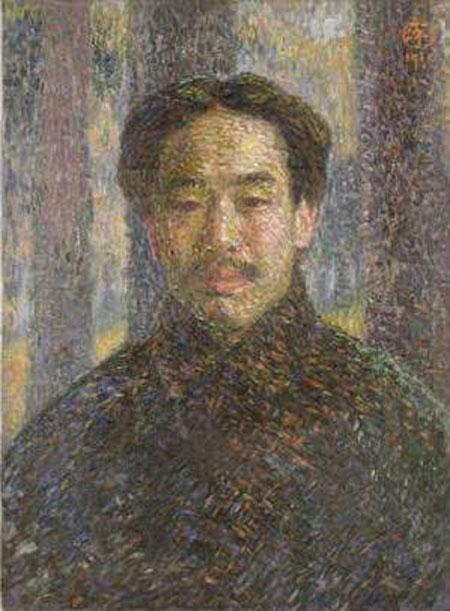
Self Portrait of Li Shutong, 1910
As the revolution occurred and the Revolution of the Divine Fist formed many Buddhists found themselves in trouble due a to mixture of reasons, in certain provinces Republican forces decided to “Westernise” which lead to the destruction of Buddhist monasteries and monuments, the remnants of the Qing army that fled to the Russian Empire would often loot and rob Buddhist monasteries and many Buddhists found themselves being target by religious zealots who had appeared in the vacuum caused by the revolution. Li Shutong realised that Buddhism had to modernise and would find his sentiments being shared Taixu, a Buddhist reformer who had turned to Dharmism as he saw the impotence of the Conservative Buddhists in China. The pair decided to form a partnership spreading a reformed and modern version of Buddhism to both the converted and non-converted across China.

Monk Taxiu, 1911

Dharmist Preacher, 1911
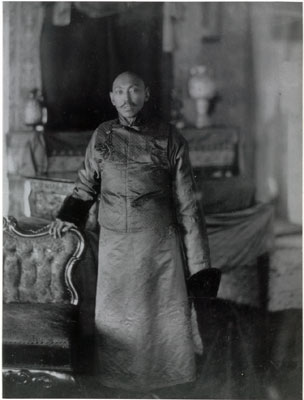
13th Dalai Lama, Thubten Gyatso, 1910

Tibetan Army, 1912

Nepalese Royal Army Officers, 1912

Choekyi Nyima with Kashag members, 1912
Tang Jiyao: The Chinese Strong Man
Tang Jiyao was a man who saw himself as the Emperor that China needed and originally he had planned to commit a coup against the Qing Emperor in 1907 before it was found out causing him to flee. Whilst in exile in Indochina Tang would discover two things; a book detailing the ideology of Custer’s RU and a thriving drug trade which was barely regulated by the lazy Dutch authorities. Using his remaining connections in China he would establish a Drug business in which he would supply Opium to various dens in Shanghai, the money he got back from them he would use to buy guns and pay gangsters to join his slowly expanding organisation. In 1910 as China became the Republic of the Divine Fist, Tang would return and try to start establishing himself as the strong man of China. But first he needed to become the strong man of Shanghai.

Tang Jiyao, 1910
In 1911 as China was invaded by the forces of the Tsar, Tang would make his move. Tang’s rivals would be murdered as he became the head of the various drug dens, brothels and casinos that Shanghai had in store, the police more concerned with Russian Aeroship bombings and keeping dissidents in check ignored Tang. As things calmed down in 1912, Tang would focus on securing his claims and expanding outside of Shanghai, creating the Tang Clique an organisation comprised of Gangsters, Adventure Capitalists and increasingly Fascists whose politics Tang agreed with but found them lacking Chinese characteristics. Tang would start writing down his ideas on the possibility of Chinese Fascism but they would only be printed in a small pamphlet called “The Chinese Strong Man”, in it called for China to retreat from its conservative ways and become a nationalistic republic which would expand across Asia uniting all Asian’s against the two evils “Russian Empire and Japon”.

Tang Clique Meeting, 1912
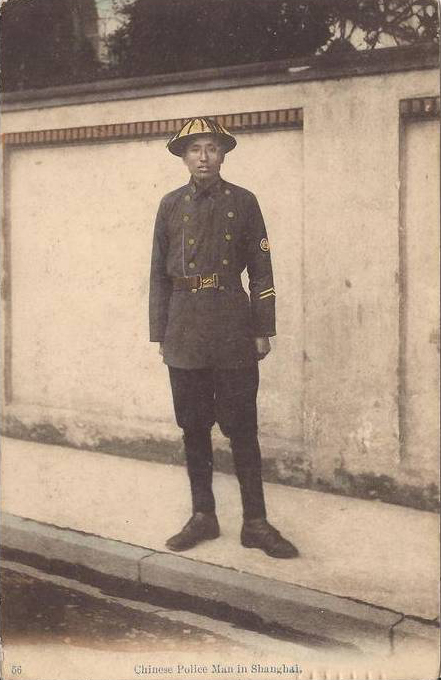
Member of Tang's Guards, 1913
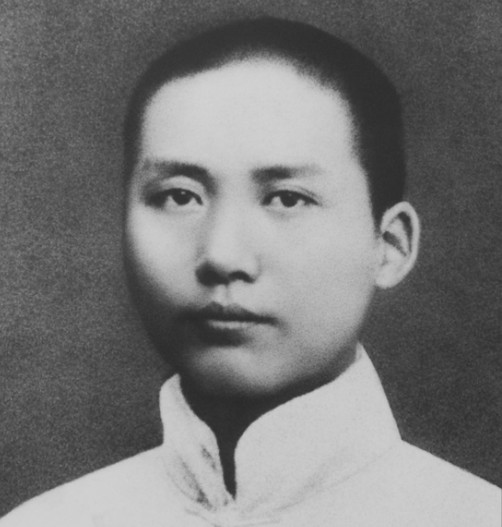
Mao Zedong, 1914
Ma Fuxiang vs.Ma Fuyuan: The Two Titans of the Hui
When Qing Government was overthrown the first problem the Republican Chinese Government had to deal with was the Hui Muslim population who were still firmly loyal to the Qing Emperor and lead by Mu Fuxiang would harass Republican Chinese troops in a successful guerrilla campaign. This would change when the Qing Government allied with the Tsar which horrified the Hui due to the Anti-Muslim policies and ideas of the Tsar especially after it was found out that the Tsar had several mosques burnt to the ground with the Mullahs trapped inside, leading to the Hui and other Chinese Muslims to declare loyalty to the new Republican Government. Lead by Mu Fuxiang the Hui Muslim Regiments would prove fearsome fighters against the forces of the Tsar and the Qing. However as the stalemate began political differences between some of the Hui would reach breaking point.
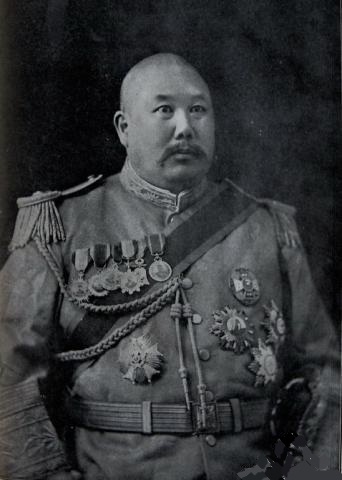
Ma Fuxiang, 1911
Whilst fighting the Republican Government Ma Fuxiang and his second in command Ma Fuyuan both met with representatives of the Persian Government who saw an opportunity to supply a Muslim insurrection for their own gains. Ma Fuxiang would turn his back on them after joining the Republican Government whilst Ma Fuyuan would stay in contact, buying weapons from them and creating his own small clique inside the army. In 1912 as stalemate set in he went into action, restarting the guerrilla war with the forces of the Republic and denouncing Ma Fuxiang as a traitor the religion of Islam. This infuriated Ma Fuxiang who proclaimed to the Republican Government he would bring Ma Fuyuan’s head on a pike and would start a campaign to rid Ma Fuyuan.

Ma Fuyuan, 1912

Member of Ma Fuyuan's Guerrilla's, 1912

Chinese Troops rush to deal with a hostage situation, 1913
In May 1913 Ma Fuxiang would help out in the coup in return for increased support and becoming governor of the Gansu after the fight with Ma Fuyuan. As Dutch arms and supplies flooded in Ma Fuxiang would use them to his advantage, in particular he would become fond of experimenting with the primitive air force the Republic had using the small aeroships they had to perform reconnaissance and to drop bombs in particular gas on the forces of Ma Fuyaun. In November 1913 Ma Fuyuan would be found by Ma Fuxiang in Hezhou City leading to street fighting between the forces. However Ma Fuxiang would win, capturing Ma Fuyuan in the process leading to his execution by firing squad before his body was behead and his head stuck on a pike and taken back to Canton. In return Ma Fuxiang would be made governor of the Gansu and he would start slowly trying to implement his ideas before quickly being interrupted as the Tsar's force pushed through into Southern China. But just because Ma Fuyuan was dead elements of forces still reminded now lead by Ma Lin who fled into Persia to prepare for the eventual strike back when the time came.

Fighting in Hezhou City, 1913

Ma Lin's Forces in Persia, 1914
Last edited:
So that was a big one on China, two parts which reached 5'000 words. It certainly was fun. Now I'm not sure what to do next;
The brief war in Wales
Or
The War in the Colonies
Or
The destruction of California
Or
The War in Ireland
So much to choose, maybe you could shout out with ideas.
The brief war in Wales
Or
The War in the Colonies
Or
The destruction of California
Or
The War in Ireland
So much to choose, maybe you could shout out with ideas.
Wales and Ireland, and Scotland as well.So that was a big one on China, two parts which reached 5'000 words. It certainly was fun. Now I'm not sure what to do next;
The brief war in Wales
Or
The War in the Colonies
Or
The destruction of California
Or
The War in Ireland
So much to choose, maybe you could shout out with ideas.
So that was a big one on China, two parts which reached 5'000 words. It certainly was fun. Now I'm not sure what to do next;
The brief war in Wales
Or
The War in the Colonies
Or
The destruction of California
Or
The War in Ireland
So much to choose, maybe you could shout out with ideas.
In order of preference:
1. War in the Colonies
2. Destruction of California
3. The Brief war in Wales
4. The War in Ireland
Suggestions:
1. Effects of the Quebec Flu worldwide
2. Better living through technology (scientific developments)
3. Where are they now?
"Quick buy as much of Canton as possible, we need to make an investment on this for fuck sake",yeah the Dutch are certainly annoyed although given that there plan's in the region were to strip mine it and run away with the loot they kind of deserve it. Hopefully the Republic of China can flee to Canton and Formosa (although that's not going to help everyone). Also I can see Tang Jiyao doing fine, I doubt the Russian Secret Police will be bothering with gangsters when they have bigger fish to fry (I can see him making a deal which allows him to be a governor of the Shanghai area).... And now the Dutch are screaming bloody murder over the fall of a partner that is Republican China.
I am leaning more to doing a look at the war in the colonies, first in Asia and then in Africa (maybe slip some Boots action to the Africa segment), I am also interested in doing the brief war in Wales mainly because I want to write something darkly comedic (I plan to have David Lloyd George & Niclas y Glais as Tony Blair & Gordon Brown style figures getting into bickering fights over politics as Wales implodes around them etc.) and doing one about Wales would allow me to do that. Although I could play up the "rich plantation owners try to play soldier only to minced upon meeting actual opposition" with the colonies story. A lot to chose from there.In order of preference:
1. War in the Colonies
2. Destruction of California
3. The Brief war in Wales
4. The War in Ireland
I like the Quebec Flu one, I keep a hold on that one. I think I could do a scientific developments one, similar in tone to my art one. I'm not sure about where are they now ones, maybe we'll see (maybe one on James Connolly, I like him and his character in WMIT so I'll see).Suggestions:
1. Effects of the Quebec Flu worldwide
2. Better living through technology (scientific developments)
3. Where are they now?
I'm planning on writing up a post on alt American art. Any suggestions on themes and styles to focus on? My idea is some kind of a mashup of traditional folk art, Soviet Realism, Nazi art, and a Rockwellian/Disneyesque sheen to make sure the fascism goes down saccharine sweet. I'm also thinking of covering alt-American folk heroes if y'all have any suggestions to throw my way.
Last edited:
GrayCatbird42
Banned
I'm planning on writing up a post on alt American art. Any suggestions on themes and styles to focus on? My idea is some kind of a mashup of traditional folk art, Soviet Realism, Nazi art, and a Rockwellian/Disneyesque sheen to make sure the fascism goes down saccharine sweet. I'm also thinking of covering alt-American folk heroes if y'all have any suggestions to throw my way.
I can imagine the RU being against whatever stands in for the avant-garde ITTL, both due to the general opposition of dictatorships to experimental art (especially if you're referencing Nazi propaganda/Soviet socialist realism) and because it's most likely associated with "decadent, absinthe-swilling Papist Europans".
Now, I can imagine *Disney having a lot more movies about Anglo-Saxon/Germanic folklore like Siegfried, Beowulf, and King Arthur, plus the requisite propaganda about Arnold, Burr, Milo Miles, etc. They're old enough that they're essentially American folk heroes. Also probably a film about Alvin and the Nutter.
Large portions of Disney's canon wouldn't be made though. "Pinocchio", "The Three Caballeros", and "The Hunchback of Notre Dame" are all centered on Inferior Papists, and some of the works they're based on won't be written in the Madnessverse.
You'd also probably see offensive caricatures of immigrants enshrined in high art as well as propaganda (although in the RU they're essentially one and the same). Probably a lot of large allegorical paintings depicting the Immolation of Mexico and the wrath of God during Cleansing Month.
Now that I'm writing this, it would be interesting to see which Disney/Pixar films would never get made ITTL, or would be racist propaganda if they were.
I see more Americana. The farm boy goes on great adventures against the decadent empire. The fall of a man to ruin and his redemption through the Church. How glorious the future will be under the leadership of the Union...
I can imagine the RU being against whatever stands in for the avant-garde ITTL, both due to the general opposition of dictatorships to experimental art (especially if you're referencing Nazi propaganda/Soviet socialist realism) and because it's most likely associated with "decadent, absinthe-swilling Papist Europans".
Now, I can imagine *Disney having a lot more movies about Anglo-Saxon/Germanic folklore like Siegfried, Beowulf, and King Arthur, plus the requisite propaganda about Arnold, Burr, Milo Miles, etc. They're old enough that they're essentially American folk heroes. Also probably a film about Alvin and the Nutter.
Large portions of Disney's canon wouldn't be made though. "Pinocchio", "The Three Caballeros", and "The Hunchback of Notre Dame" are all centered on Inferior Papists, and some of the works they're based on won't be written in the Madnessverse.
You'd also probably see offensive caricatures of immigrants enshrined in high art as well as propaganda (although in the RU they're essentially one and the same). Probably a lot of large allegorical paintings depicting the Immolation of Mexico and the wrath of God during Cleansing Month.
Now that I'm writing this, it would be interesting to see which Disney/Pixar films would never get made ITTL, or would be racist propaganda if they were.
I see more Americana. The farm boy goes on great adventures against the decadent empire. The fall of a man to ruin and his redemption through the Church. How glorious the future will be under the leadership of the Union...
I definitely don't see the Union embracing anything avant garde. That's for the "sissified French Papists" to create. I definitely anticipate Beowulf and King Arthur being stupidly popular, as well as Washington, Burr, and other folk heroes. In fact, thinking about this sparked the idea for a future American folk hero update, lol.
I've started typing up the post. I've basically divided alt-American Art into 4 genres: Yankee Romanticism, American Greco-Romanism, American/Fascist Realism, and Americana. I should hopefully have it up soon!
when you finish can you do the same for Carolina and the rest of the world in terms of art?I definitely don't see the Union embracing anything avant garde. That's for the "sissified French Papists" to create. I definitely anticipate Beowulf and King Arthur being stupidly popular, as well as Washington, Burr, and other folk heroes. In fact, thinking about this sparked the idea for a future American folk hero update, lol.
I've started typing up the post. I've basically divided alt-American Art into 4 genres: Yankee Romanticism, American Greco-Romanism, American/Fascist Realism, and Americana. I should hopefully have it up soon!
GrayCatbird42
Banned
I definitely don't see the Union embracing anything avant garde. That's for the "sissified French Papists" to create. I definitely anticipate Beowulf and King Arthur being stupidly popular, as well as Washington, Burr, and other folk heroes. In fact, thinking about this sparked the idea for a future American folk hero update, lol.
I've started typing up the post. I've basically divided alt-American Art into 4 genres: Yankee Romanticism, American Greco-Romanism, American/Fascist Realism, and Americana. I should hopefully have it up soon!
I can also see something like Thomas Cole's The Course of Empire paintings becoming huge in the RU's art world, but with more stuff about how empires fall when they let their Pinnacle Bloodlines become diluted. Also large, crowded propaganda paintings showing the imagined state of the rest of the world. Like perhaps some kind of decadent feast lorded over by Pope Sixtus VI, or a "tour of the nations" crammed with ethnic and religious stereotypes
Hey guys, quick update! I should have the art chapter up tomorrow. I would have finished it sooner, but I was also busy wrapping up finals, lol.
The Great War in the Colonies: Asia
As the giants of Europe battled each other for dominance of the continent other battles were happening elsewhere. The colonies of the various European powers also prepared themselves for war, however unlike the veteran soldiers and master tacticians of their homelands the colonies instead often housed spoilt rich kids playing soldier, career criminals, bored servicemen and natives who preferred being the beater instead of the beaten. Much of these problems were made worse when many of the elite military organisations stationed in the colonies were sent back to Europe or to the Middle East to deal with the problems there. In their wake they left the dumbest of the dumb, the crooked of the crooks and the worst of the worst to fight out trivial battles which didn’t amount to much in the long run, let’s find out more shall we:
Battle in the Jewels of Asia:
As Europa fought the Russians in Europe in India things were relatively quiet, apart from the usual battles with insurgent tribes and the occasional religious zealot in Kashmir the Europan army wasn’t really doing much. In fact numerous troops would be shipped off to Europe to fight the Tsar in Europe leaving behind a rather motley force in its wake lead by distant cousin of Emperor Napoleon, a General by the name of Jean Louis Rossi. The son of an Italian Duchess and a cousin of Napoleon in 1870, Jean spent his entire life in luxury and comfort, especially after he was sent off to India as a Captain in the Europan Army. Despite the fact that Jean was terrible at tactics other than overwhelming his enemies with large numbers and heavy artillery he quickly rose up the ranks, thanks to a mixture of nepotism and blind luck ending up the head of the Europan forces in India by 1911. As word got out about the conflict between Europa and the Central Powers Jean decided to start planning an attack of Dutch South East Asia and to arrest numerous Central Powers residents living in India despite promises that the businesses in the region wouldn’t get involved in politics or the war. Throughout late November and Early December numerous Central Powers and Dutch residents & companies would move to Dutch South East Asia or to neutral Nepal (leading angry discussions between the Europan Ambassador and the Nepalese Government) and prepare for the worst.
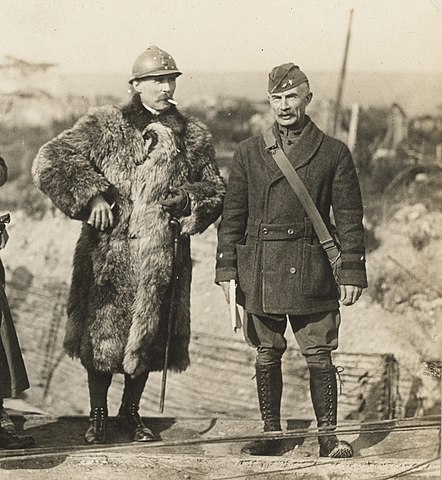
Jean Louis Rossi (left) at Californian War Games in 1910
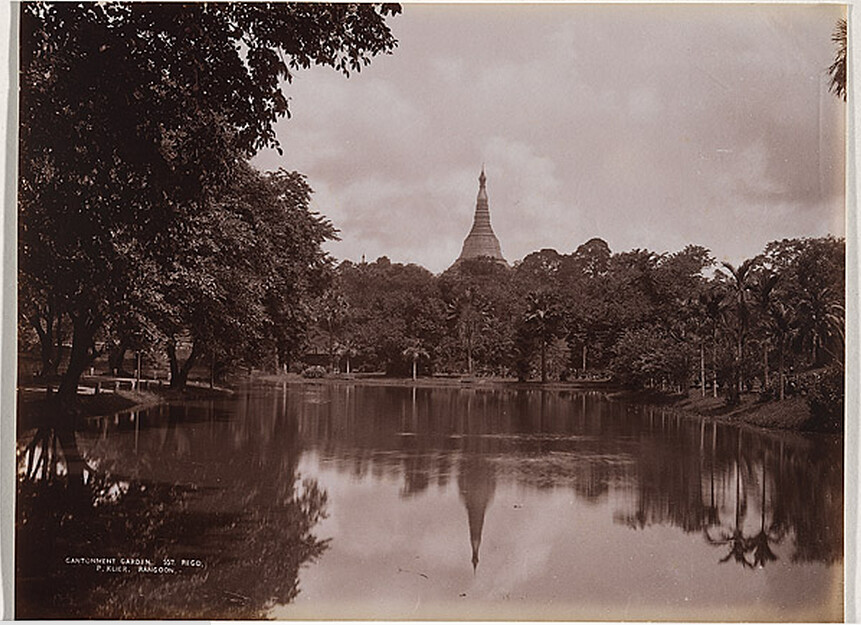
Picture of Rangoon in Dutch Burma, 1910
Major General Johannes Drees was born in 1861 to Henk Drees & Juliana Drees, middle class owners of a Tea House in the Netherlands. In 1879 he would join the Dutch Army just in time for the Dutch invasion of the Zulu nation in 1880 which he would prove himself in combat during the battle of New Groningen being awarded the Imperial Dutch Medal of Valour and being promoted to Captain as a result. Throughout much of the 1880s, 1890s and the early 1900s Johannes Drees would raise up through the ranks, using his charm and cunning tactical abilities to help quash numerous rebellions across the Dutch Empire. He would become friends with the Dutch Royal family in particular Prince Herman Napoleon the nephew of King Louis Napoleon which would cause him problems. In 1906 French Newspapers would gain sordid pictures of Johannes and Herman engaged in intimate acts which caused a scandal amongst the high society of the Netherlands particularly once more details were discovered.

Major General Johannes Drees, 1911
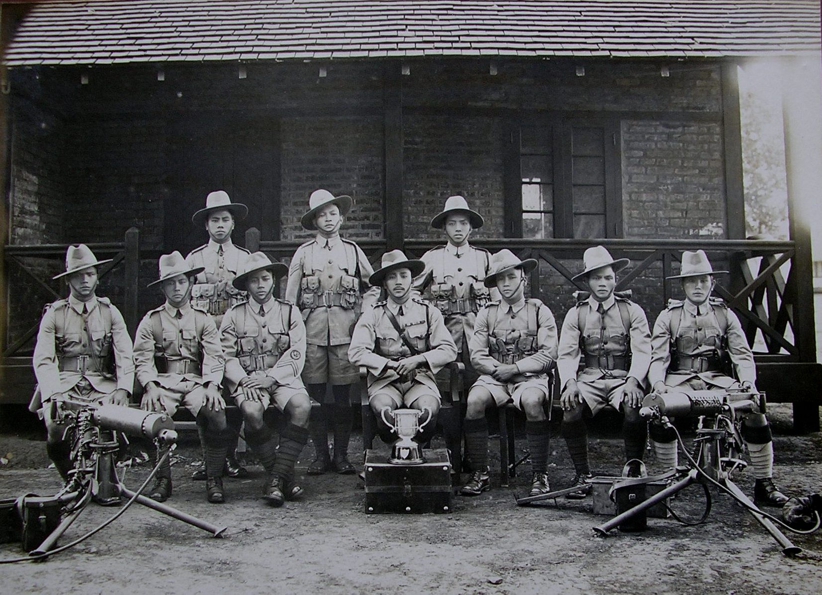
Members of the Imperial Burma Rifles, 1911

Member of the Europan Indian Army, 1912

Dutch Artillery Piece in the Ceylon Fortifications, 1911
:max_bytes(150000):strip_icc()/battle-of-dogger-bank-56a61ba53df78cf7728b60b6.jpg)
Europan Battleship "The Pride of Lyon" sinking off Ceylon, 1911

Europan Artillery bombard Dutch positions, 1912

Malayasian Rubber Plant on fire after a bombing run, 1912

Europan Troops during Gas Mask training, 1912

Indonesian Shock Troopers, 1912

Troops from Dutch Siam rest in Yangon, 1913

General Eduardo Delaine (left) showing members of Europan Colonial Society the trenches in Bengal, 1913

Dutch Imperial Troops engaging in Machine Gun fire in Bengal, 1913

A collection of rioters, terrorists and nationalists await to be executed, 1914
Last edited:
Visual Fascism: The Art of the American People
University of Lyon Press
To many Europans, the idea of American art seems an oxymoron, like a yellow orange or a weak Bonaparte. After all to produce art, one must be capable of introspection and empathy, things which the Yankees seem to forgo in favor of insane Fundamentalism, blood soaked expansionism, and obsessive industrialism. However, despite the horrific nature of their society, the Americans have still produced a great deal of art, albeit art that is both informed by, and reinforces, their fascist worldview. The study of the four main schools of American art, Yankee Romanticism, American Greco-Romanism, American Realism, and Americana, reveals a great deal about the twisted depths of the Yankee mind and soul, invaluable for those who wish to understand our Empire's greatest enemies.University of Lyon Press
Yankee Romanticism: This school of art is derivative of a wider school of Yankee thought known as the American Romantic Movement, which has influenced literature, art, and even music. Fundamentally, Yankee Romanticism worships the past glories of the American people, especially the American War of Independence, and glorifies noble heroes of American history and an imagined "Anglo-Saxon-Nordic-Teutonic-Classical" past which functions more as fascist myth than historical fact. Depictions of Aaron Burr, George Washington, Beowulf, and King Arthur are exceptionally common, as well as depictions of masses of colonial soldiers fighting the British, Republican Union troops facing down the "Psychotic Canuckie Hordes," and the imperial movement of Manifest Destiny via portrayals of pioneers and others. The Father of Yankee Romanticism is John Trumbull, who started by painting depictions of George Washington. The second most influential, and even more famous member of this school, is Emanuel Leutze, who was extremely prolific. Below are three works considered emblematic of the genre, two from Leutze and one from Trumbull.
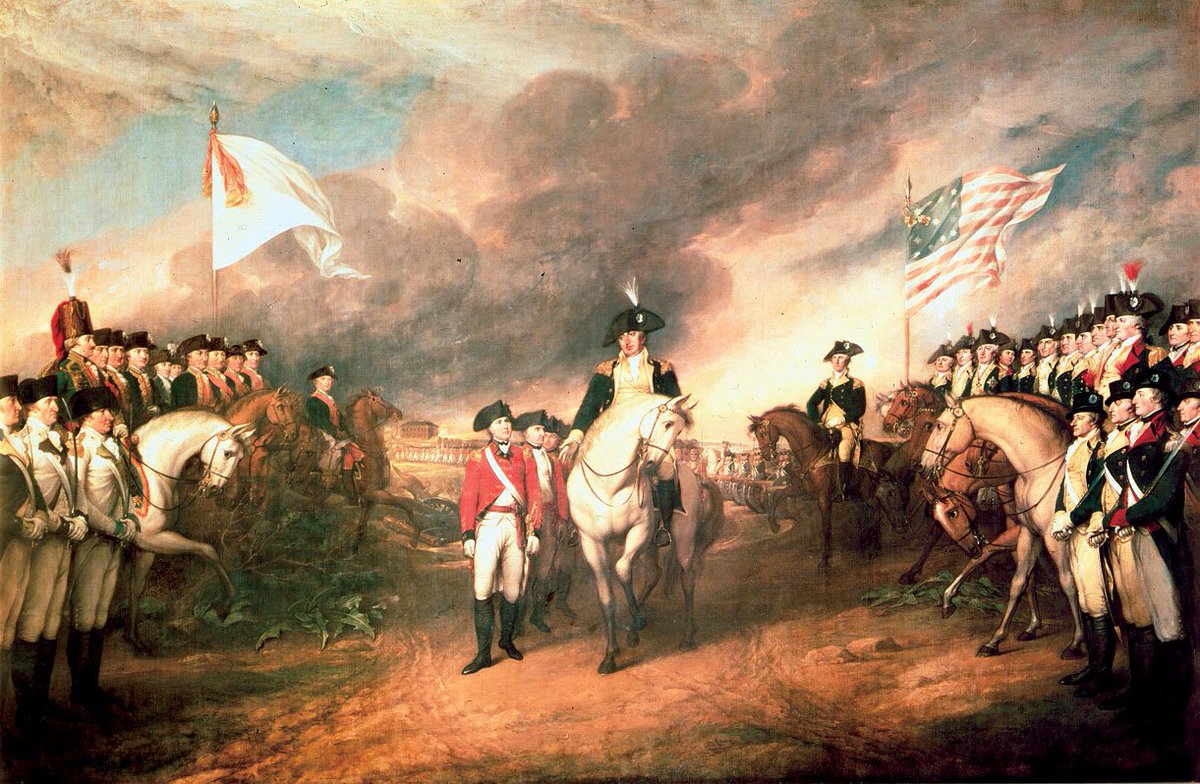
The Surrender of General Cornwallis to General Washington at Yorktown by John Trumbull (1820)
Patriot-Saint Washington Crossing the Delaware by Emanuel Leutze (1851)
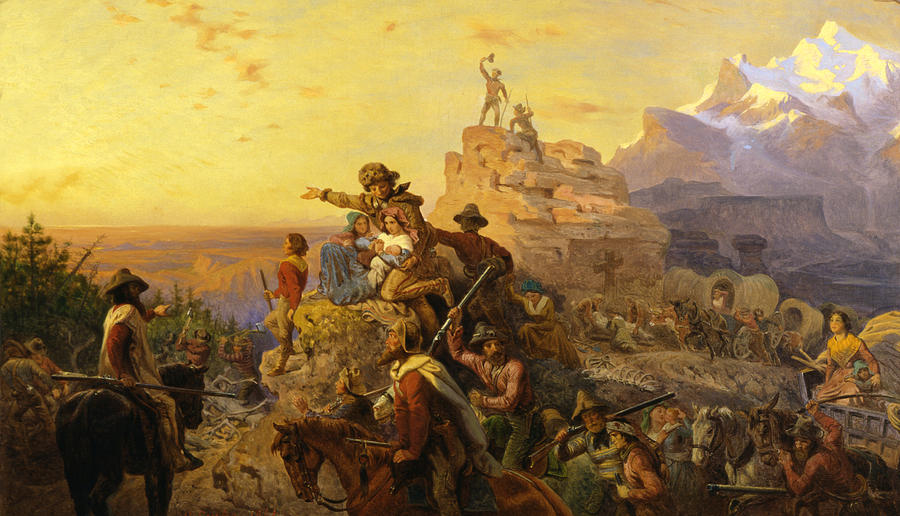
Westward Ho! The Pinnacle Race Spreads the Empire of Liberty by Emanuel Leutze (1853)
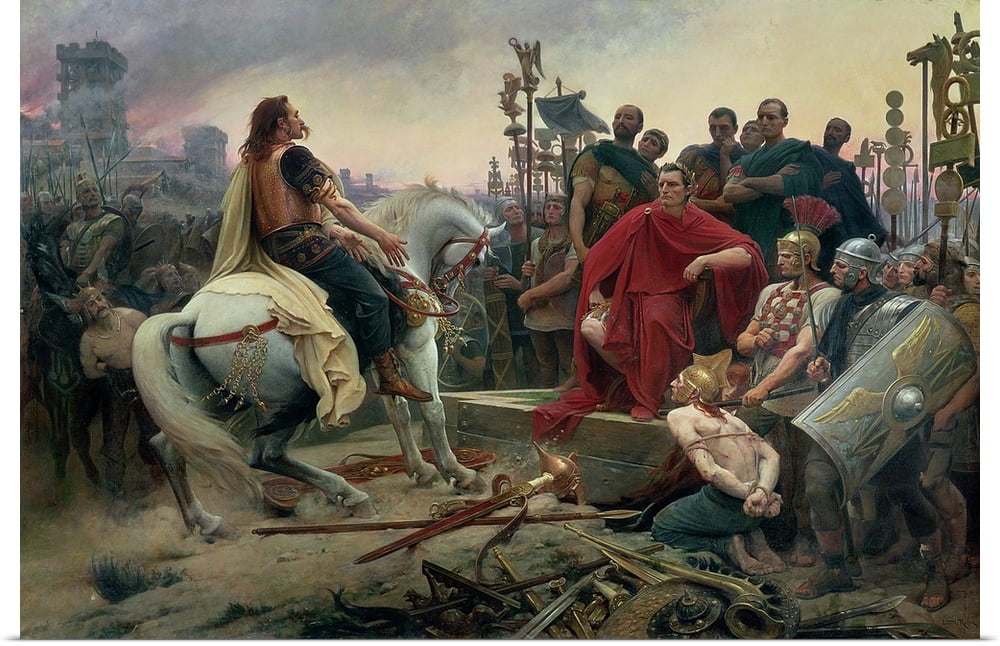
The Strong Man Triumphant; or Caesar, Pinnacle Conqueror of France by Emanuel Leutze (1855)
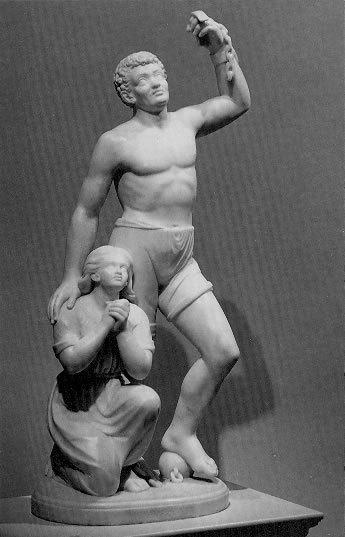
Forever Free: The Pinnacle Negro Rescued from Bondage by Edmonia Lewis (1864)
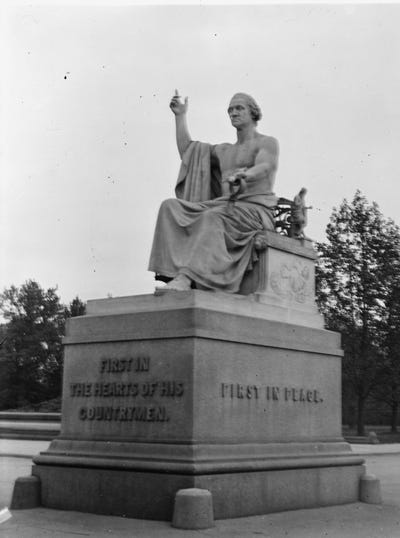
Patriot-Saint Washington as Jupiter by Edmonia Lewis
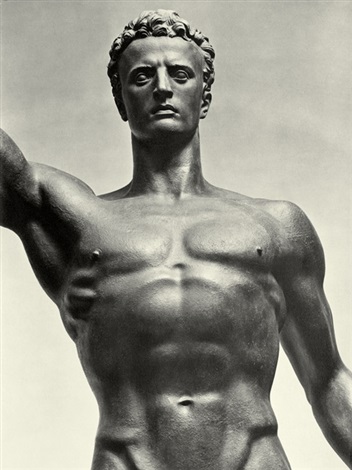
The Pinnacle Man in Nature by Edmonia Lewis (1883)
American Realism: American Realism is a newer form of art, and coincides with the rise of the Manifest Destiny Party. In fact, the whole genre has been driven by government funding, as a way to propagandize the Fascist regime. It depicts happy, hardworking Americans "fighting the good fight for Liberty," and depicts scenes both blatantly propagandist in nature, and more subtle propaganda extolling American prosperity, community, and power. Large scale murals or posters are the favorite mediums of this school, although there is some sculpture as well. Leader portraits are also featured in this school, and they blend a strange sense of realism with cultish enthusiasm. The artists in this school are numerous, but the most famous are John Singer Sargent, Thomas Eakins, and William Abraham Chase. A good sampling of their works follows:
President Custer as Frontiersman by William A Chase (1892)

Our Commander-in-Chief in Bespoke Uniform by John Singer Sargent (1901)

A Saturday Luncheon by Thomas Eakins (1908)
A Pinnacle Wedding by William A Chase (1907)
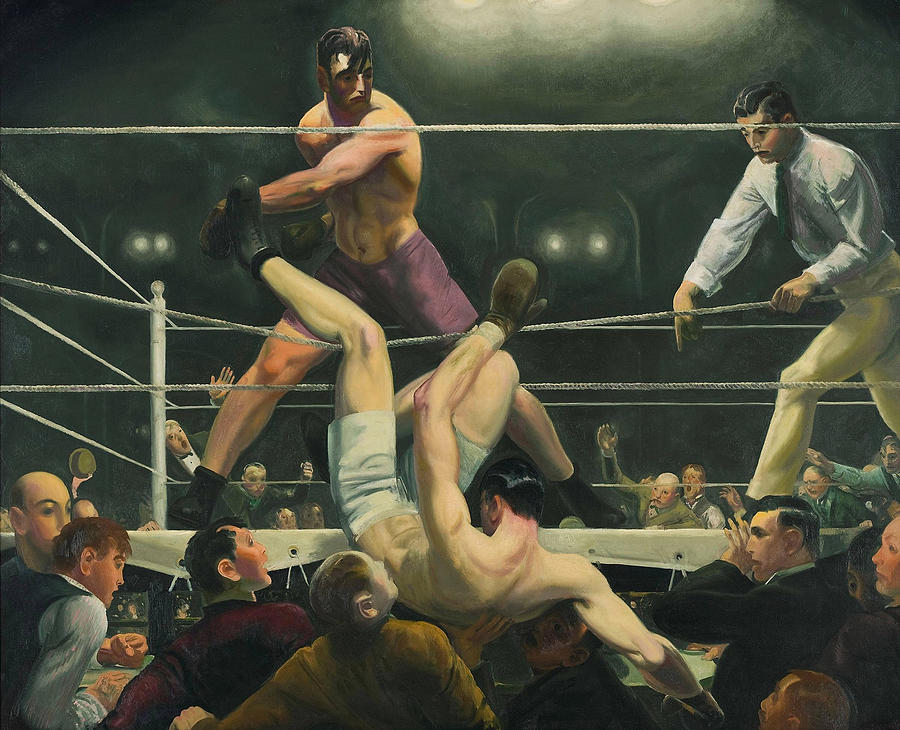
Social Darwinism in Action by John Singer Sargent (1912)

American Winter Scenes by Currier and Ives (Original Print 1880)

Father Washington by All-American Painters Corporation (1852)

The Soldier's Home, The Vision by Currier and Ives (Original Print 1860)
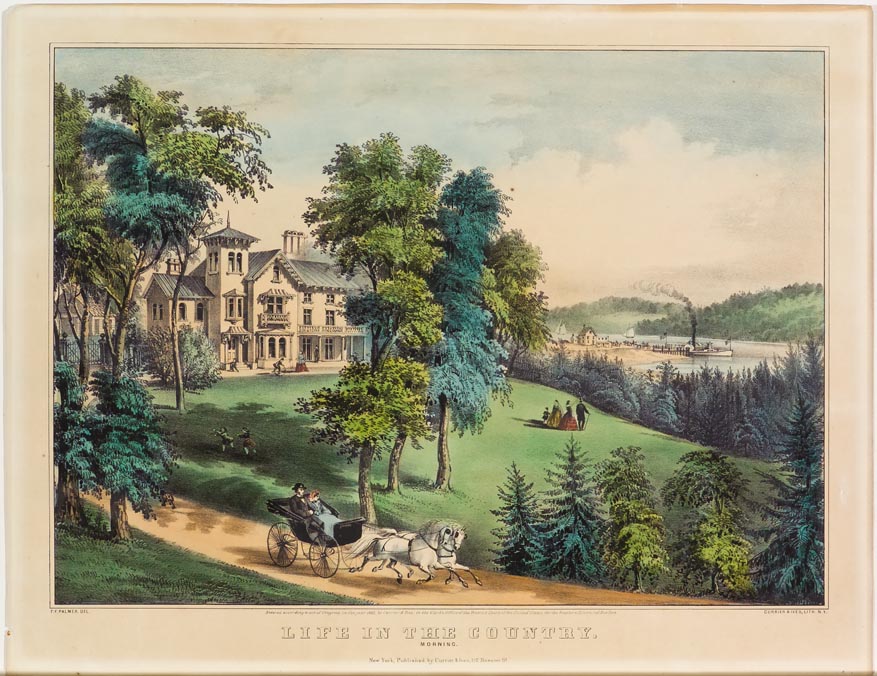
Life in the Country by Currier and Ives

Across the Continent by Currier and Ives
when you finish can you do the same for Carolina and the rest of the world in terms of art?
I might try and do Carolina, but the rest of the world is on the precipice of such drastic change that I don't know if I could do their art justice. Plus I'm not as educated about more avant garde movements that I imagine will at least be somewhat influential in the non-Fascist world.
I think the next thing I'm going to write is going to be a list of American folk heroes. There will be some OTL heroes (Paul Bunyan for example) Madness! Burr, Lincoln, and Custer (now that Custer's dead), Beowulf, King Arthur, and some original ones. After that, I've been thinking about writing some "excerpts" from different history textbooks around the globe (but especially Yankee ones) to show just how warped their interpretation is. I think it would be interesting since we all obviously love history on this site.
Say, has anyone proposed an AU scenario where the Southron nations managed to defeat the Republican Union, perhaps with substantial French help?
Coming Soon:
The Great War in the Colonies:Oceania

Duke Ernest Augustus the Second of Western Australia

Minister of Defence John De Burgh

Aboriginal Soldier with wife before being sent of to fight the Commonwealth

Commonwealth Soldiers advance

Duke Ernest Augustus the Second of Western Australia

Minister of Defence John De Burgh

Aboriginal Soldier with wife before being sent of to fight the Commonwealth

Commonwealth Soldiers advance
Share: